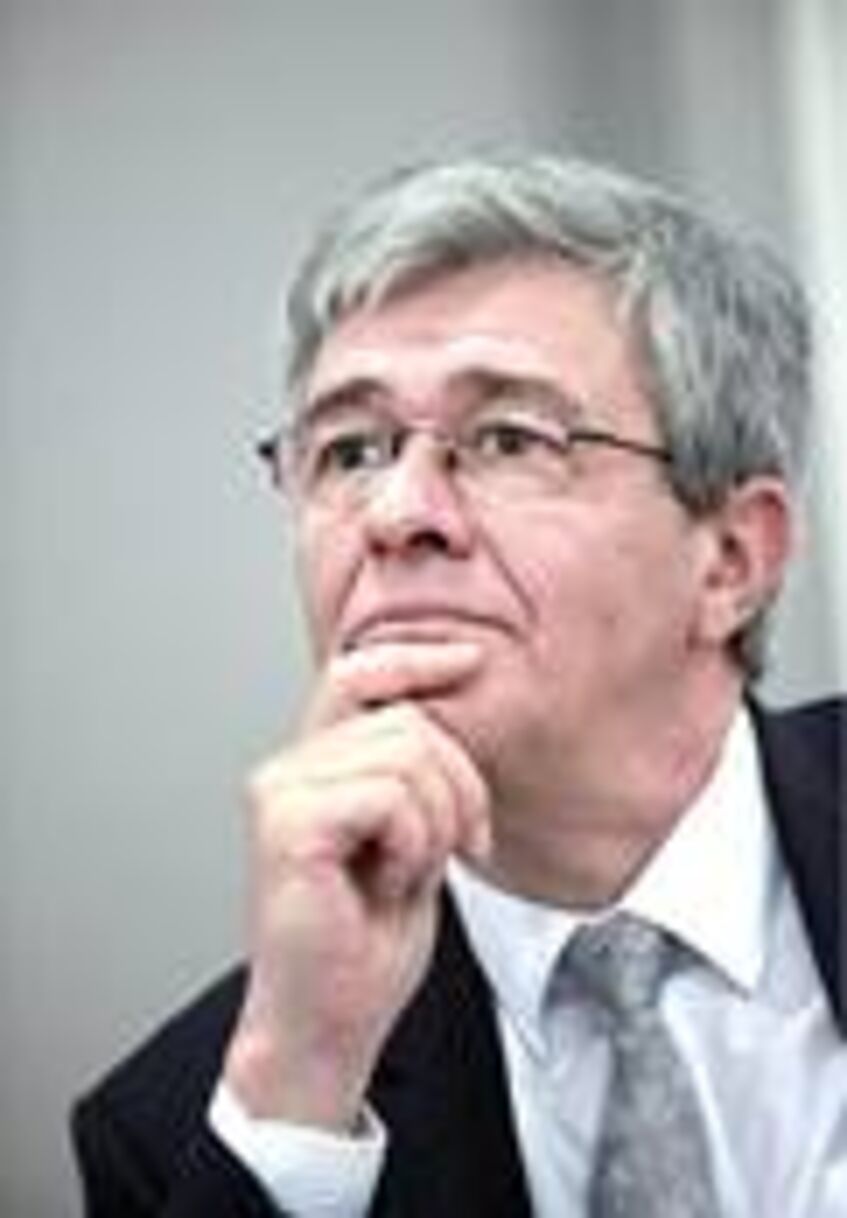Predictive Processing: From Concept to Circuits

The Predictive Processing Symposium is a wrap!
Thank you all for participating in the Vienna Cognitive Science Hub's Predictive Processing Symposium: From Concept to Circuits!
While the Symposium is over, Predictive Processing is not.
Check it out!
- The recordings of the introductory lectures of Ronald Sladky and Moritz Grosse-Wentrup are public, scroll down!
- Watch the lectures by Karl J. Friston and Naoshige Uchida as well as the closing panel discussion by using the blue Log-In Button.
- We will keep constantly updated of this website and add supplementary materials in the days to come.
- We will invite and announce follow-up session to go deeper into the world of Predictive Processing soon!
Get Access to the recordings!
In case you missed registering for the Symposium, you can post-register here to get access to the recordings!
Introductory Lecture: Predictive Processsing in a Nutshell, Ronald Sladky
Bio-Sketch: Ronald Sladky
Ronald Sladky is a cognitive neuroscientist at the University of Vienna, Austria, at the Faculty of Psychology (Department of Cognition, Emotion, and Methods in Psychology). He teaches courses on cognitive science and predictive processing. His research focusses on the amygdala as well as emotion processing and social cognition in the human brain. In addition, he is always working on new neuroimaging, data processing, and modeling methods. One of these new methods is real-time functional MRI, where people can learn to regulate their own brain states while they are inside the MRI scanner. This method is not only a promising therapeutic tool it will also allow for completely new ways for discovering how our brains work.
After studying computer science at the Vienna University of Technology, he was one of the first to finish the new interdisciplinary master program in cognitive science (MEi:CogSci) at the University of Vienna. Supervised by Christian Windischberger, he received a PhD and a habilitation in medical physics at the Medical University of Vienna for his work on functional MRI methodology and brain connectivity. He spent two years as a postdoc in Frank Scharnowski's Lab in Zurich where he was involved in real-time fMRI studies to investigate the applicability of fMRI-based neurofeedback training in patients with psychiatric disorders. As of 2018, he is a member of Claus Lamm's SCAN Unit at the University of Vienna and managing the University of Vienna MR Center.
Discussion: Predictive Processsing in a Nutshell, Ronald Sladky
Literature recommendations
- Andy Clark (2013) Whatever Next? Predictive Brains, Situated Agents, and the Future of Cognitive Science.
- Andy Clark (2015) Surfing Uncertainty: Prediction, Action, and the Embodied Mind.
- Jakob Hohwy (2013) The Predictive Mind.
- Karl Friston (2010) The free-energy principle: a unified brain theory?
- Hermann Haken (2004) Synergetics.
- Wanja Wiese and Thomas Metzinger (2017) Vanilla PP for Philosophers: A Primer on Predictive Processing.
Introductory Lecture: Multilevel Causal Modelling, Moritz Grosse-Wentrup
Bio-Sketch: Moritz Grosse-Wentrup
Moritz Grosse-Wentrup is full professor and head of the Research Group Neuroinformatics at the University of Vienna, Austria. He develops machine learning algorithms that provide insights into how large-scale neural activity gives rise to (disorders of) cognition, and applies these algorithms in the domain of cognitive neural engineering, e.g., to build brain-computer interfaces for communication with severely paralyzed patients, design closed-loop neural interfaces for stroke rehabilitation, and develop personalized brain stimulation paradigms.
He has received numerous awards for his work, including the 2011 Annual Brain-Computer Interface Research Award, the 2014 Teaching Award of the Graduate School of Neural Information Processing at the University of Tübingen, and the 2016 IEEE Brain Initiative Best Paper Award.
Literature recommendation:
Rubenstein, P., Weichwald, S., Bongers, S., Mooij, J., Janzing, D., Grosse-Wentrup, M., and Schölkopf, B. (2017). Causal consistency of structural equation models. In Proceedings of the Thirty-Third Annual Conference on Uncertainty in Artificial Intelligence (UAI 2017), page ID11. arxiv.org/pdf/1707.00819
Predictive Processing Symposium: From Concept to Circuits
PROGRAM
INTRODUCTION TO PREDICTIVE PROCESSING (ONLINE)
- 09:00-10:00 | Introduction lecture 1 - Ronald Sladky, University of Vienna, Social, Cognitive & Affective Neuroscience Unit (online, please register separately for this lecture)
- 10:00-11:00 | Introduction lecture 2 - Moritz Grosse-Wentrup, University of Vienna, Head of the Research Group Neuroinformatics (online, please register separately for this lecture)
SYMPOSIUM (ONLINE)
- 12:00 | OPENING SPEECH
Introducing Words Rector Heinz W. Engl, University of Vienna - 12:10 | WELCOME
Short welcome address by Helmut Leder, Head of the Vienna CogSciHub
KEYNOTES
- 12:20-13:20 | "ME AND MY MARKOV BLANKET" presented by Karl J. Friston,
Scientific Director: Wellcome Trust Centre for Neuroimaging, Institute of Neurology, UCL
13:20-13:50 | Question & Answers - 14:00-15:00 | "WHAT DO DOPAMINE NEURONS COMPUTE" presented by Naoshige Uchida,
Harvard University | Center for Brain Science, Department of Molecular and Cellular Biology
15:00-15:30 | Question & Answers - 15:30-16:00 | HOME COFFEE BREAK
- 16:00-17:00 | PANEL DISCUSSION with
Karl J. Friston (University College London)
Naoshige Uchida (Harvard University)
Isabella Sarto-Jackson (Konrad Lorenz Institute for Evolution and Cognition Research)
Moritz Grosse-Wentrup (University of Vienna)
Manuel Zimmer (University of Vienna)
Anchorman and scientific moderation: Ronald Sladky (University of Vienna) - 17:00 | END
Speaker
Professor Karl J. Friston MB, BS, MA, MRCPsych, FMedSci, FRSB, FRS
Wellcome Principal Fellow
Scientific Director: Wellcome Trust Centre for Neuroimaging
Institute of Neurology, UCL
12 Queen Square
London. WC1N 3BG UK
Keynote title
ME AND MY MARKOV BLANKET
ABSTRACT
This presentation offers a heuristic proof (and simulations of a primordial soup) suggesting that life—or biological self-organization—is an inevitable and emergent property of any (weakly mixing) random dynamical system that possesses a Markov blanket. This conclusion is based on the following arguments: if a system can be differentiated from its external milieu, heat bath or environment, then the system’s internal and external states must be conditionally independent. These independencies induce a Markov blanket that separates internal and external states. This separation means that internal states will appear to minimize a free energy functional of blanket states – via a variational principle of stationary action. Crucially, this equips internal states with an information geometry, pertaining to probabilistic beliefs about something; namely external states. Interestingly, this free energy is the same quantity that is optimized in Bayesian inference and machine learning (where it is known as an evidence lower bound). In short, internal states (and their Markov blanket) will appear to model—and act on—their world to preserve their functional and structural integrity. This leads to a Bayesian mechanics, which can be neatly summarised as self-evidencing.
Key words: active inference ∙ autopoiesis ∙ cognitive ∙ dynamics ∙ free energy ∙ epistemic value ∙ self-organization.

Bio-sketch
Karl Friston is a theoretical neuroscientist and authority on brain imaging. He invented statistical parametric mapping (SPM), voxel-based morphometry (VBM) and dynamic causal modelling (DCM). These contributions were motivated by schizophrenia research and theoretical studies of value-learning, formulated as the dysconnection hypothesis of schizophrenia. Mathematical contributions include variational Laplacian procedures and generalized filtering for hierarchical Bayesian model inversion. Friston currently works on models of functional integration in the human brain and the principles that underlie neuronal interactions. His main contribution to theoretical neurobiology is a free-energy principle for action and perception (active inference). Friston received the first Young Investigators Award in Human Brain Mapping (1996) and was elected a Fellow of the Academy of Medical Sciences (1999). In 2000 he was President of the international Organization of Human Brain Mapping. In 2003 he was awarded the Minerva Golden Brain Award and was elected a Fellow of the Royal Society in 2006. In 2008 he received a Medal, College de France and an Honorary Doctorate from the University of York in 2011. He became of Fellow of the Royal Society of Biology in 2012, received the Weldon Memorial prize and Medal in 2013 for contributions to mathematical biology and was elected as a member of EMBO (excellence in the life sciences) in 2014 and the Academia Europaea in (2015). He was the 2016 recipient of the Charles Branch Award for unparalleled breakthroughs in Brain Research and the Glass Brain Award, a lifetime achievement award in the field of human brain mapping. He holds Honorary Doctorates from the University of Zurich and Radboud University.
Speaker
Professor Naoshige Uchida, Ph.D.
Harvard University | Center for Brain Science
Department of Molecular and Cellular Biology
Biolabs 4057, 16 Divinity Avenue,
Cambridge, MA 02138
Keynote title
WHAT DOPAMINE NEURONS COMPUTE?
ABSTRACT
Dopamine plays a crucial role in learning from trial and error but how dopamine functions in the brain remains hotly debated. It has been proposed that the activity of dopamine neurons approximates temporal difference prediction errors (TD errors), a type of prediction errors used in reinforcement learning algorithms. In TD learning algorithms, as an agent traverses across different states, the agent updates the value of each state when it detects a change in values across consecutive time points without waiting for a final outcome. That is, it updates a guess (an estimated value of a given state) based on guesses (the difference in estimated values of consecutive time points)(Sutton and Barto, 1998). This property --“bootstrapping” values -- allows the agent to infer which actions were good even before obtaining a final outcome, and plays an essential role in solving a so-called credit assignment problem. If dopamine represents TD errors in the brain, the activity of dopamine neurons should track moment-by-moment changes in value but this idea has not been tested previously. In this talk, I will present multiple lines of evidence that demonstrate that dopamine neurons perform derivative-like computation over values on a moment-by-moment basis, instantiating a key feature of TD errors.
Key words: reinforcement learning, dopamine, prediction error, learning algorithm, credit assignment

Bio-sketch
Naoshige Uchida is a professor at the Center for Brain Science and Department of Molecular and Cellular Biology at Harvard University. He received his Ph.D. on his study on the molecular mechanism of synaptic adhesions done in Masatoshi Takeichi‘s laboratory at Kyoto University, Japan. He started studies of olfactory coding in Kensaku Mori‘s laboratory at the Brain Science Institute, RIKEN, Japan. He then joined Zachary F. Mainen‘s laboratory at Cold Spring Harbor Laboratory, New York, USA, where he developed psychophysical olfactory decision tasks in rodents. He started his laboratory at Harvard University in 2006.
His current research focuses on the neurobiology of decision-making and learning. The research topics include the neural computation in the midbrain dopamine system, functions of the cortico-basal ganglia circuit, foraging decisions, motor learning, and artificial intelligence. His research combines quantitative rodent behaviors with multi-neuronal recordings, two-photon microscopy, computational modeling, and modern tools such as optogenetics and viral neural circuit tracing.
